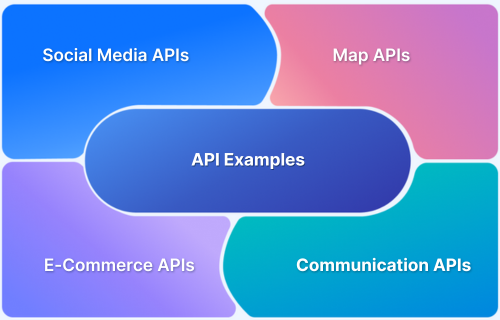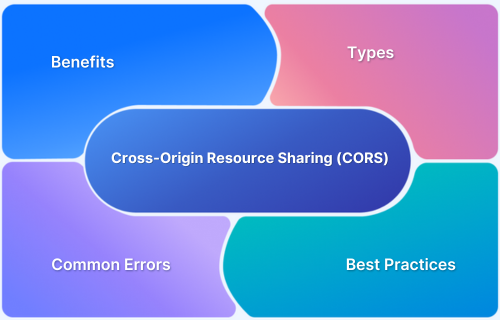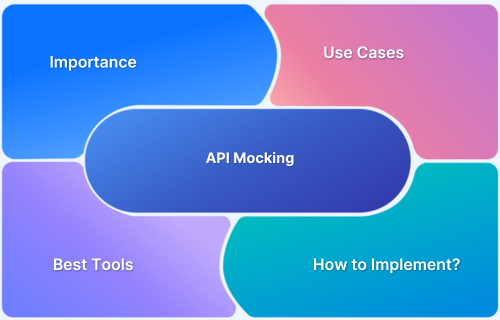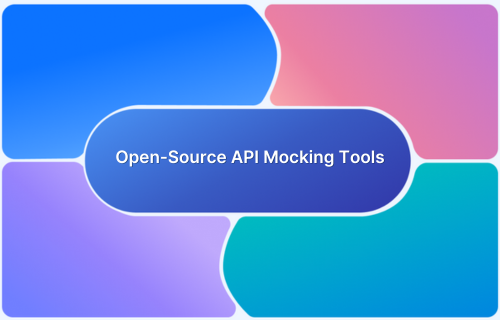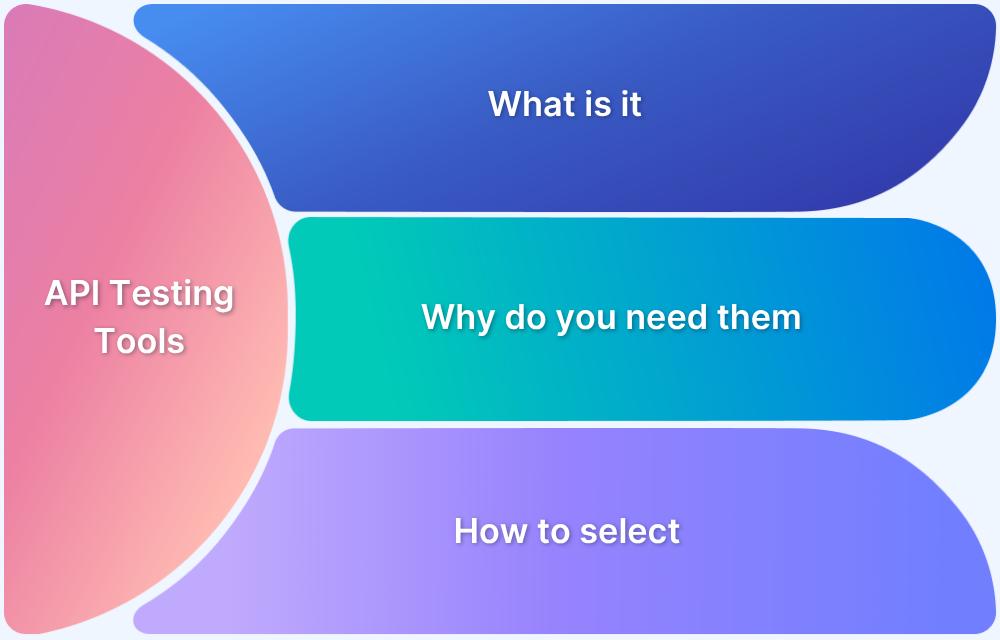Designing a GraphQL schema that’s both scalable and easy to maintain can be challenging. Small mistakes in type definitions or schema structure often lead to broken queries, inconsistent data, and testing bottlenecks. Thoughtful schema and type design ensures reliable, scalable, and easily testable APIs.
Overview
A GraphQL schema defines the structure of data that an API can provide, including the available queries, mutations, and the relationships between data types. It serves as a contract between the client and server, ensuring both sides understand the data’s shape and behavior.
Key Components of a GraphQL Schema:
- Types: Define the shape of data and how fields relate.
- Queries: Read operations that fetch data.
- Mutations: Write operations that modify data.
- Subscriptions: Real-time updates from the server.
- Directives: Provide runtime instructions like @deprecated or @include.
- Resolvers: Functions that connect schema fields to actual data sources.
GraphQL Schema Types:
- Scalar Types: Basic data (e.g., Int, Float, String, Boolean, ID).
- Object Types: Represent structured entities with fields.
- Enum Types: Define a fixed set of possible values.
- Input Object Types: Used for structured input in mutations.
- Interface Types: Abstract types implemented by multiple objects
- Union Types: Combine multiple object types into a single return type.
- Custom Scalars: User-defined data formats like Date or Email.
This article explores the essentials of schema and type design, common pitfalls, testing strategies, and best practices.
GraphQL Schema & Type System
A GraphQL schema and type system form the foundation of any GraphQL API. The schema defines the data structure, available operations, and relationships between different entities, while the type system enforces rules about how data is represented and validated. Together, they ensure that clients know exactly what data they can request, and in what format, reducing ambiguity between the frontend and backend.
Every GraphQL schema is built using a Schema Definition Language (SDL), which outlines the types, queries, mutations, and subscriptions. This schema acts as a contract between client and server, enabling clear communication and predictable results.
The type system includes built-in types like Int, String, and Boolean, along with more advanced constructs such as objects, enums, interfaces, and unions, allowing developers to model real-world data with precision and flexibility.
Design Patterns, Trade-offs & Pitfalls in Type/Schema Design
Designing an effective GraphQL schema goes beyond defining types, it’s about finding the right balance between clarity, flexibility, performance, and maintainability. A well-structured schema should make data intuitive to query, easy to evolve, and simple to test. However, schema design often involves trade-offs that can impact long-term scalability and developer experience.
Common Design Patterns
- Modular Schema Design: Break your schema into smaller, feature-based modules (e.g., User, Product, Order) that can be combined using schema stitching or federation. This approach promotes reusability, improves organization, and simplifies maintenance.
- Consistent Naming Conventions: Use predictable and meaningful naming for types and fields (e.g., UserProfile, productList). Consistency enhances readability and reduces confusion for API consumers.
- Reusing Input and Output Types Carefully: Reuse types where appropriate to maintain consistency but avoid forcing a single type to serve both input and output purposes, as this can lead to validation issues.
- Use of Interfaces and Unions: Apply interfaces when multiple types share common fields (e.g., Media implemented by Image, Video) and unions when a field can return different object types. This provides flexibility without sacrificing structure.
- Schema Documentation via SDL: Leverage GraphQL’s self-documenting nature, include descriptions in your SDL to make schemas easier for teams to understand and for clients to explore via tools like GraphiQL or Apollo Studio.
Design Trade-offs
- Flexibility vs. Type Safety: Overly strict types make schemas harder to evolve, while overly flexible ones reduce validation reliability. Find the right balance depending on your API’s stability and use cases.
- Simplicity vs. Reusability: A simpler schema might be faster to develop but can lead to code duplication. Conversely, overusing shared types can make changes riskier and more complex.
- Performance vs. Depth of Relationships: Deeply nested object relationships can slow down queries and increase resolver complexity. Use pagination and batching strategies to optimize performance.
Common Pitfalls to Avoid
- Over-Nesting of Types: Deeply nested fields may look elegant but can lead to expensive queries and performance bottlenecks.
- Excessive Nullable Fields: Making too many fields optional hides validation errors and reduces schema reliability. Use Non-Null (!) fields where data is guaranteed.
- Mixing Input and Output Types: Avoid reusing the same object for both mutation inputs and query outputs. Inputs should validate data; outputs should present data.
- Poor Type Naming or Duplication: Inconsistent or unclear type names confuse consumers and make schema evolution harder.
- Ignoring Deprecation: Failing to properly deprecate fields leads to technical debt and unexpected client breakages. Always use the @deprecated directive when removing or replacing fields.
Schema & Types in API Testing
The GraphQL schema and type system serve as the backbone for API testing by defining what data can be requested, how it’s structured, and what types of responses are valid. Since the schema clearly specifies all queries, mutations, and data types, it provides a reliable reference point for designing comprehensive test cases that ensure data integrity and API stability.
Schema-based testing allows teams to verify that the API responses strictly conform to the defined type system. For example, if a field is marked as String!, the testing process ensures it never returns null or any other type. This strong typing makes it easier to detect mismatched fields, missing attributes, and invalid input formats early in the development cycle.
Different layers of testing benefit from the schema’s structure:
- Unit testing validates individual resolvers against expected return types.
- Integration testing ensures complete queries and mutations behave as defined.
- Contract testing compares schema versions to detect breaking changes before release.
Tools like Requestly streamline this process by automating validation, mocking responses, and simulating varied testing conditions. Requestly, in particular, helps developers intercept and modify GraphQL requests in real time, making it easier to test edge cases without backend changes.
Best Practices for Designing and Testing GraphQL Schemas and Types
Building a reliable and scalable GraphQL API requires careful attention to both schema design and testing strategy. The following best practices help ensure your schemas are clean, efficient, and easy to validate, while keeping your APIs stable as they evolve.
Design the schema for clarity and evolution
- Model real concepts, not tables: Keep types business-oriented (Order, Invoice) and avoid leaking storage details.
- Be deliberate with nullability: Prefer Non-Null (!) where data is guaranteed; use nullable only when absence is meaningful.
- Keep relationships shallow: Avoid deep nesting; expose connections with pagination (edges, pageInfo) and filters.
- Separate input vs output: Don’t reuse the same type for both. Use Input types for mutations to keep validation clean.
- Use enums, interfaces, unions wisely:
- Enums constrain values (safer than free-text strings).
- Interfaces capture shared fields; unions model “this or that” results without fake inheritance.
- Custom scalars with guards: Add scalars like DateTime, Email, URL only with parsing/validation and clear docs (e.g., ISO-8601).
- Consistent naming + descriptions: CamelCase for Types, lowerCamel for fields/args; write SDL descriptions so tools auto-document your API.
- Directive discipline: Use @deprecated(reason:) for safe evolution; avoid business logic in directives unless standardized across services.
Design for performance and safety
- Control query cost: Enforce depth/complexity limits, require pagination on list fields, and add sensible default limits.
- Batch and cache: Use DataLoader (or equivalent) to avoid N+1 queries; cache per-request where safe.
- Auth in resolvers, not SDL: Keep authorization checks in resolver logic; reflect access rules in docs and errors, not type shapes.
Test the schema as a contract
- Schema diffing in CI: Use tools (e.g., GraphQL Inspector / Apollo checks) to block breaking changes before deploy.
- Resolver unit tests: Validate that each resolver returns shapes matching the declared types (including non-null guarantees).
- Integration/contract tests: Execute real queries/mutations against test data; assert shape, nullability, and error payloads.
- Fuzz and edge cases: Generate schema-valid random queries and extremes (deep nesting, large lists, bad enums) to surface hot spots early.
- Typed client tests: Generate TypeScript types from the schema (graphql-codegen) so client tests fail at compile-time on drift.
Observe usage and evolve safely
- Usage analytics: Track which fields/args are actually used; deprecate low-usage ones first, then remove after a measured window.
- Version-safe rollouts: Prefer additive changes; when replacing a field, ship new → deprecate old → migrate clients → remove.
- Actionable errors: Standardize error shapes (extensions codes) so clients can reliably handle validation/auth/data errors.
Speed up testing workflows
- Mock predictably: Provide deterministic mocks for common types and edge cases; snapshot responses where stable.
- Intercept & simulate: Use a request interceptor/mocker (e.g., Requestly) to tweak GraphQL queries/responses, simulate server errors, schema changes, and latency without changing backend code.
Simplify GraphQL API Testing and Mocking with Requestly
Testing GraphQL APIs often involves setting up complex environments or modifying backend logic, a process that can slow down development.
Requestly by BrowserStack simplifies this by allowing developers and testers to intercept, modify, and mock GraphQL requests and responses directly in the browser, without changing server code.
With Requestly, you can:
- Mock GraphQL responses to test frontend behavior for different query results or error states.
- Intercept and edit requests to simulate schema or type changes before they’re implemented on the backend.
- Create test scenarios quickly, such as testing null values, invalid types, or network delays.
- Collaborate seamlessly, sharing rules and mock configurations across the team.
By integrating Requestly into your GraphQL testing workflow, you can validate API behavior faster, catch issues earlier, and ensure smooth client-side testing – all without disrupting backend development.
Conclusion
A well-structured GraphQL schema and type system form the backbone of a stable, scalable, and testable API. Thoughtful design helps prevent data inconsistencies, simplifies testing, and makes future evolution easier.
By combining sound schema design principles with effective testing strategies, including schema validation, monitoring, and mocking tools like Requestly, teams can deliver APIs that are both reliable and adaptable.



